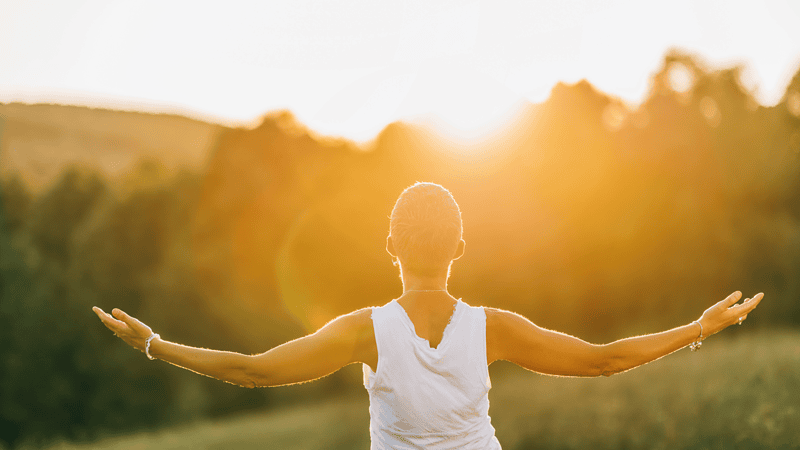
Balancing structure and freedom in Kids' Yoga
Getting the balance right in classes for children. By Maria Oliver
Yoga is all about balance, and not just the type where you stand on one foot. I often return to Patanjali’s Yoga Sutras, the first one being ‘Sthira Sukham Asanam’, or yoga poses should be steady and comfortable.
Teaching children’s yoga is also very much about keeping a balance. On the one hand, children’s parents have signed them up to classes because they want to learn something, and children haven’t yet learned to regulate emotions, so there must be structure and rules to keep them safe and focused. Structure and rules or steadiness, also help children feel safe as they are predictable.
On the other hand, a large proportion of children’s lives is structured. If they attend school, they have rules to follow and a strict timetable. If they do sports and activities, there are standards to meet, more rules to follow, maybe assessments and exams and competitions. Yoga is non-competitive and the only real criteria to meet is whether you are feeling good inside. Yoga can be the perfect antidote to the structure and rules that govern a child’s life. Some comfort and ease is to be encouraged.
I particularly noticed this when returning to schools at the end of lockdown. Children had had months without a routine, or too much Sukha, and suddenly had to return to the Sthira or structure of a school day. Teachers had a challenge on their hands. I found that when teaching yoga I wanted to allow the children some freedom so that they could let off steam, and express themselves by co-creating a class with me, but not so much freedom that the class would descend into chaos.
Here are some ideas that I’ve used to help me get the balance right in a children’s yoga class.
Singing Old MacDonald had a farm
The children know the structure already, it’s safe, familiar and predictable. However, we can introduce an element of choice by allowing every child to choose an animal. For each new verse, ask a child for their suggestion and if they don’t want to say anything, move on to the next child. Another element of choice is that as this is our farm, we can keep any animal we like. We can have unicorns, dinosaurs and jellyfish. Every time we sing about a new animal, we do a yoga pose. If an animal is so out of the ordinary that we don’t know a yoga pose for it, we can make one up.
We take it in turns, we allow everyone the opportunity to make a suggestion, and we make sure everyone is listened to. There are rules, but there is freedom.
It can go on for as long as you like (or until your voice gives out). You can watch the children to see if they’re getting tired or fed up. As long as the energy is high, keep going!
Yoga poses in games
Using a game called ‘four corners’ where someone in the middle counts to ten while the others run to different corners of the room. The person in the middle then chooses a corner without looking, and everyone in that corner is out. We play this with yoga poses, and I let the children agree on what the four yoga poses are for each corner of the room. We make sure that everyone’s suggestions are listened to. Sometimes I’ll ask the children to go with the theme of that week, so the poses might all be backbends or balances, or under-the-sea themed. The game rules and the theme provide the structure, and the children choose the poses.
Making up a story, but each element of the story must incorporate a yoga pose
This works best with children you’ve been teaching for a while! I ask the first child, ‘where are we?’ and maybe we’re up a mountain (Mountain Pose) or in a forest (Tree Pose) and the second child ‘who is with us?’ and maybe there’s a dog or a warrior and so on. Everyone is offered a turn, and nobody has to contribute if they choose not to. One story I particularly remember began with us sledging down a mountain, towards a frozen lake where a mermaid was trapped under the ice! If you can’t think of a yoga pose for one element of the story, ask the children to come up with one. They never run out of ideas!
This does need some guidance, and you need to add structure to the story and know when you need to start drawing things to a close, but again it gives that magic blend of freedom and structure.
I used the idea of balancing structure and freedom to create my first yoga picture book published in 2021, Once Upon a Time, You… a yoga adventure where you choose what happens! It’s a story where you are the main character, you choose who you are flying with and where to fly. On every page are yoga poses and items to find. You can do the yoga poses in any order, or miss some out if you want. You can end the story whenever you want, or keep going round and round again! It’s great in children’s classes because you can ask a child to choose each element of the story, and then go to the page they have chosen. And of course it ends with a relaxation session, as every yoga class should.
It went down so well that I have another one coming out in May 2023! Not So Long Ago, You… follows the same structure but with different yoga poses and scenarios. And both books are available in Chair Yoga editions, because getting down on a mat isn’t possible for every body, but every body can do yoga.
Freedom, joy, and creativity but with boundaries. Sthira and Sukha! Just right for children’s yoga.





